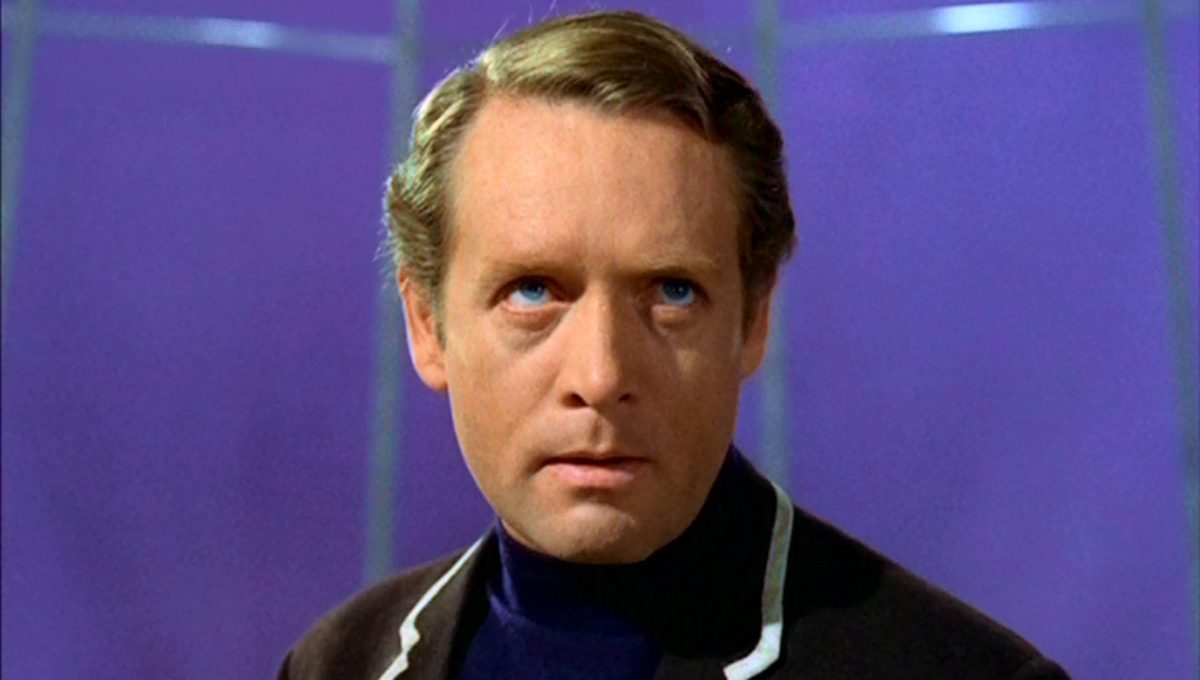It’s fifty years this month since The Prisoner premiered on British screens, bringing with it blazers, badges and mind-bending bad guys. The show ran for a mere two years, two truncated seasons and seventeen episodes, but its surreal imagery, iconic catchphrases, cerebral plots and absolutely bonkers ending have earned it a perennial place in our cultural consciousness.
It’s truly an odd-beast, quintessentially sixties in some respects, timeless in others. It’s hard to describe or define it as any one thing: it’s a spy show that isn’t a spy show; it’s an action show with bigger brains than muscles; it’s an episode of Yes Minister written by The Beatles; it’s James Bond giving a philosophy lecture on LSD; it’s The Truman Show meets The Twilight Zone by way of Hi-de-Hi! It’s confusing, enlightening, novel, clichéd, nonsensical, prescient, rational and crazy, minute to minute, second-to-second, and often all at once.
Patrick McGoohan (as well as creating and devising the show) plays the prisoner of the title, a former secret agent who resigns from the service, and instead of receiving a pre-paid card for the M&S Food Hall for which his workmates have all chipped in a couple of quid each, his employers decide to celebrate the end of his tenure by gassing him unconscious, flying him off, and placing him in a facsimile of his posh London pad within a colourful, cloistered and mysterious village. He remains trapped in that half-Notting Hill, half-Hieronymus Bosch hell, sandwiched between the mountains and the sea, under surveillance and subjected to almost constant mental torture.
And you think your retirement package is bad.
At the beginning of each episode this backstory is conveyed through one of the most iconic and effective title sequences ever produced, a mini-movie in its own right, at turns thrilling, powerful and mesmeric. The theme music, devised and performed by Australian composer Ron Grainer (who also came up with the theme for Doctor Who), is a rollicking piece that uses the urgent, insistent twangs of the electric guitar and the pulse-quickening beat of timpani drums to establish a prevailing mood of tension, adventure and excitement.
The title sequence ends with a silhouetted McGoohan on a dusk-shrouded beach shaking his fist at the heavens as a recording of a bitter verbal battle between him and his tormentors reaches its angry – and endlessly quotable – climax.
By hook or by crook, we will
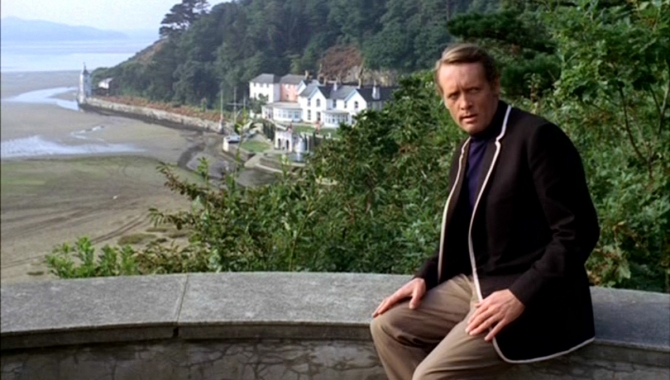

In this strange new place – this prison with no bars – residents are known by number rather than name, designations that must be worn on penny-farthing-themed badges stuck to their lapels. Names are forbidden. They must never be written down; they must never be spoken. McGoohan is Number 6, and only Number 6, despite his famously iconic protestation to the contrary:
“I am not a number… I am a free man!”
His new home is simultaneously kitsch and terrifying; sleepy and kinetic; unconscionable and adorable. It’s both as camp as Christmas, and as hopelessly bleak as Christmas in the trenches. Everyone who lives there looks like they’re auditioning for a part in a Where’s Wally poster. Number 6 constantly finds himself in full-blown fist-fights with gangs of guys all dressed like they got lost in a Tintin cartoon on their way to a boating regatta. Residents routinely practise the ancient Japanese martial art of trampolitzu, which involves two fully-grown men wearing orange jumpsuits and crash helmets bouncing at each other from two trampolines positioned either side of a giant vat of water.
If this place were real (well, the filming location is real – it’s the hotel resort of Portmeirion in Wales – but it probably isn’t a semi-psychedelic offshore prison facility run by spies in real-life) it would be hipster Mecca, the sort of ‘authentic custodial experience break’ that could only be booked by accessing a link hidden inside the website of an indie band probably called something like ‘Suddenly Animatronic Gordon’, a link that could only be opened with a password whispered on the dying breath of a Tibetan monk, that in turn could only be decrypted using a code published on page 97 of the June 1996 edition of ‘Session Kazooist Monthly’.
The Village is a place where former agents and operatives come to have their individuality and spirit wrestled into submission, and information wrung from their every neuron, the one inevitably bleeding into the other. They want information. But who are they? What information do they want? Whose side are they on? Are any of the people in The Village real? Are they plants? Who are they?
Who am I?
These are the questions that Number 6 tackles head-on as he struts and slopes through the soporific banality of the village like some malevolent Nicky Campbell, dressed like a boarding-school prefect channelling David Tennant’s Doctor. Plotting revenge. Seeking answers. Dodging the ever-watchful eyes of his enemies.
Those who attempt escape are chased down by a giant latex ball, a seemingly sentient but guided space-hopper-of-death which, if it catches you, will either suffocate you to the point of expiration, or bounce you along inside of it like you’ve just died in a freak Zorbing accident. The ball is known as Rover, something which would only add to the embarrassment should you happen to be killed by it. Fans of The Prisoner think that Rover is another strange, inscrutable part of the mind-bending puzzle at the heart of the show, but in reality McGoohan wanted a killer robot, but it was the sixties and it would’ve been crap, so he went with a beach ball-cum-condom instead.
Every 6 needs a 2
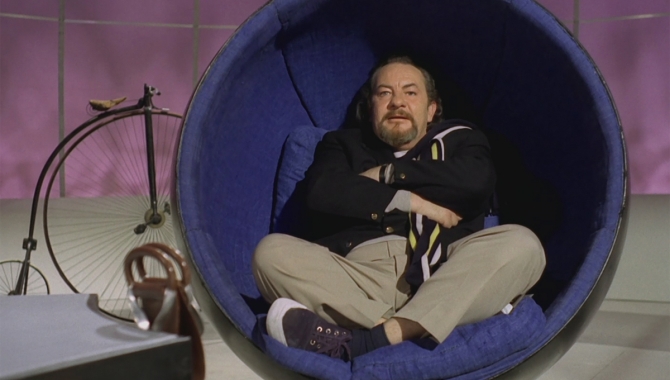

Number 6’s arch nemesis is Number 2, the top-ranking bureaucrat tasked with breaking him in a succession of increasingly fiendish ways, with a view to finding out why he resigned. Number 2’s office looks like a cross between an astronomical observatory, a Bond villain’s lair and somewhere Austin Powers takes groupies. Number 2’s black ovoid chair can emerge from the floor. There are monstrously large cassette-tape decks, state-of-the-art 15-inch TV screens, and telephone receivers that look like giant letters stolen from the set of Sesame Street. Two men on a revolving steel see-saw, each with a chair-mounted periscope, frequently bob around the control room, for reasons best known to themselves. I don’t know what their function is, or even if they’ve got one, but by golly I could see myself doing a job like that.
“Thanks for attending your appraisal. Where do you see yourself in another five years, Mr Andrew?”
“Nauseous but happy.”
Number 2 is faceless yet constant, a different character played by a different actor in each episode (with a few notable exceptions). Thus, win or lose, number 6 is rarely able to know his enemy, and his strategies for sabotage and escape must be built from scratch each time.
The revolving-door nature of Number 2 emphasises the impermanence of – and disregard for – identity within the Village, and brings into sharp focus the futility of number 6’s mission (impossible). They are almost always one step ahead. There’s always a new number 2 waiting to drop. But who is number 1? Or, to put it another way, who does Number 2 work for?
God damn you, Mike Myers. Thanks to the Austin Powers movies – which owe an obvious and intentional debt to Bond, The Avengers, Danger Man (McGoohan’s other 60s spy series) and The Prisoner – I can’t enjoy McGoohan’s sinister smorgasbord of Number 2s, or any mention of Number 2 in any context whatsoever, without hearing Tom Arnold uttering the immature and immortal line: ‘That’s right, buddy, you show that turd who’s boss.’
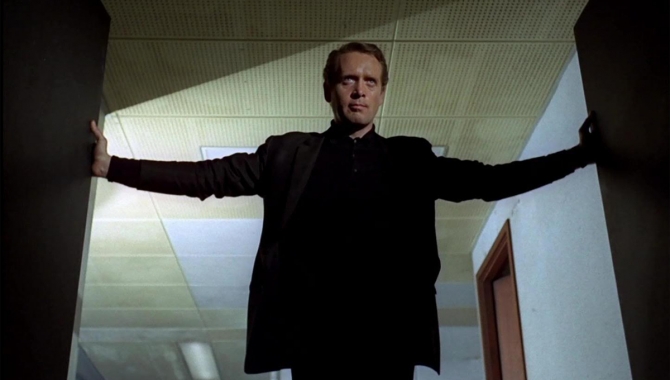
The closer Number 6 comes to shedding his shackles and unmasking Number 1, the weirder The Prisoner becomes. For the first chunk of its run the show plays like a slightly left-field and mysterious but none-the-less straight-forward spy drama, albeit one that likes to smuggle in sly digs at society’s institutions and conventions. In the beginning we don’t know why Number 6 is there, why he resigned, why his captors want to know why he resigned, or who Number 1 is, but we don’t need to, and we don’t really care. The joy of The Prisoner is in watching Number 6 thwart the bad guys’ continued plans to mess with his head – everything from evil doppelgangers, to body swaps, to a genius supercomputer (a computer that, naturally, this being the sixties, is the kind of computer that can be made to blow up by asking it things like ‘How beautiful is a rainbow?’) – and to see how close he can get to escaping before the big ball bounces down the road after him. The best episodes are those that showcase Number 6’s feral cunning, or highlight his frailty and hubris, with The Arrival, The Schizoid Man, Many Happy Returns, Checkmate, and Hammer into Anvil being especial stand-outs.
About seven or so episodes from the end, everything goes a bit One Flew Over the Cuckoo’s Nest meets Twin Peaks. There’s a Wild West episode. And an episode where 6 is regressed to a baby. And there’s a death. And a resurrection. And an ad-libbed trial. And singing. Lots of singing. And Leo McKern trying to out Brian-Blessed Brian Blessed himself. And even more singing. And some dancing. And a big reveal that either confirms McGoohan’s genius to the world, or marks him out as a pretentious hack – a no-good hipster – who isn’t nearly as profound as he thinks he is, and clearly has no idea how to handle endings.
Recommending The Prisoner to someone who hasn’t heard of it before can feel like singing the praises of a slightly unusual friend who’s about to arrive at your party. You’re worried people won’t take to him. But ten minutes after he turns up, you think to yourself, ‘What were you worrying about, silly’? He spends most of the night impressing with his poise, delighting the ladies with his devil-may-care brand of snark and fury, and electrifying the room with his deep and nuanced conversation. Phew. What a relief.
Unfortunately, though, it doesn’t last. He spends the final hours of the party parading around the house wearing a cloak he’s made from the other guests’ coats, angrily proclaiming that they’re all ‘SHEEPLE’, singing Bob Dylan songs backwards and flushing staples down the toilet. He rounds off the night by jumping out of a first storey window shouting ‘I AM VOLTRON!’
And everyone’s left wondering: ‘What the **** was that?’
So what the **** was that?
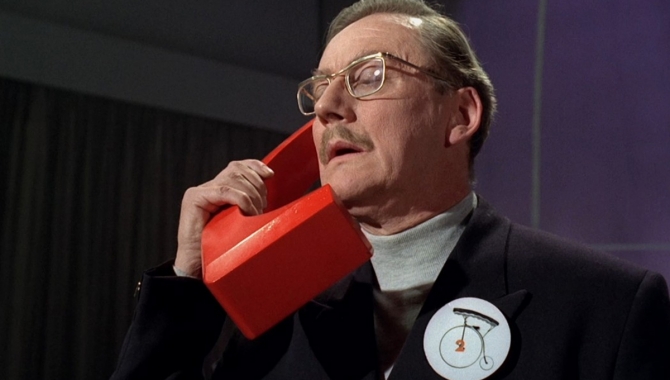

The Prisoner can be – and frequently is – interpreted in a multitude of different ways. It can be viewed as a battle between individualism and collectivism, with Number 6 taking up the cudgel for free men and women everywhere. It can be seen as an expression of McGoohan’s Catholicism, with Number 6 as the anti-Bond (McGoohan stood firm against the network’s insistence that Number 6 become romantically and sexually entangled); a moral man of spiritual courage taking a stand against an increasingly materialistic and scientific world.
It’s also been posited that Number 6 and John Drake, McGoohan’s character in Danger Man, are actually the same person, and that the show itself is nothing more than a meta-style response to those fans demanding to know why McGoohan ‘resigned’ from Danger Man.
McGoohan himself said of the show: ‘Your village may be different from other people’s villages, but we are all prisoners,’ making the Village – with its deceit, paranoia and senselessness – a proxy for our own world, and the worlds within it. Who knows? Maybe the show is just about the nightmare of one day waking up in Wales.
All you need is love…
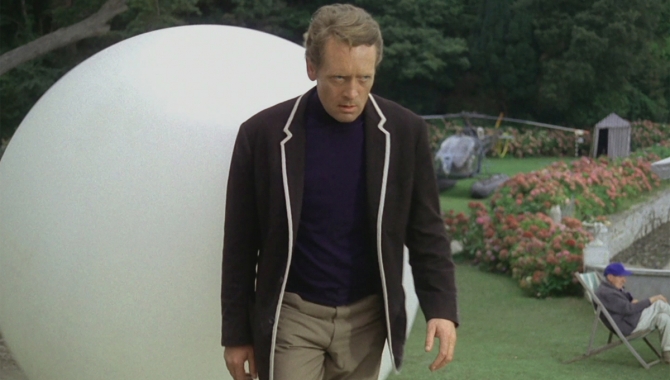

TV has long shaken off its reputation as the poor cousin of cinema. TV’s rich potential for long-form narrative has given us countless audio-visual masterpieces that are closer in scope and artistry to the novel than the big screen. We’re inured to the process of deconstructing TV shows, and especially of unlocking their secrets as if they were near-infinite Rubik’s Cubes of meaning. The puzzle at the heart of The Prisoner was far ahead of its time, and still inspires creative souls and works to this day, fifty long years later.
Before Cuse and Lindelof could chronicle the mysteries of their time-bending island, before David Lynch could walk with fire, or David Chase could play with fire, McGoohan first had to walk landwards from the beach answering answers with questions as he went, and steadfastly refusing to make the workings of his dramatic equations visible to those too stubborn or intellectually unimaginative to think outside of the box – or their Village.
I’ll leave the final word on The Prisoner‘s legacy to my own mother, who remembers watching it when it was first broadcast, and last week opined: “Do you know what… I didn’t always have a clue what the hell was going on…
…but I always really enjoyed it.”

